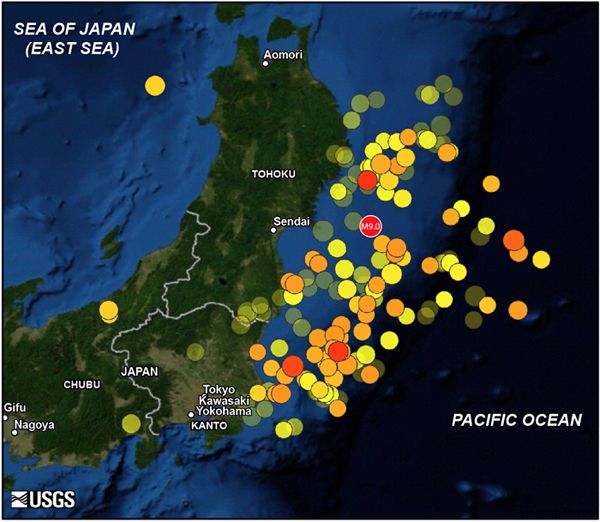
Long Lulls Could Help Predict Impending Quakes

Evidence is growing that powerful earthquakes are preceded by a years-long lulls in seismic activity, suggest new analyses of major quakes, including the massive temblor that struck Japan in March.
Learning more about such lulls could help scientists predict when disaster might strike, said seismologist Kei Katsumata at Hokkaido University in Japan. He predicts that an area near Tokyo could soon be hit by a devastating magnitude 9 quake.
For decades, scientists have suggested there were calm periods before moderate to major earthquakes, lulls where there were fewer smaller quakes than normal for anywhere from 15 to 75 months, presumably because stress was building up in faults. Still, it remains unclear how common these lulls are, what characteristics they have and what might be the best way to measure them.
Ideally, a better understanding of these calm periods could help researchers predict when large quakes might hit.
Looking for lulls
To learn more about such earthquake lulls, Katsumata investigated the 2003 Tokachi-oki quake. This magnitude 8.3 temblor off the Pacific coast of the Japanese island of Hokkaido caused extensive damage, landslides and power outages, and there were no precursory tremors seen beforehand as detected with some other earthquakes.
Katsumata analyzed nine years of seismic activity preceding the 2003 earthquake, involving about 2,000 temblors of magnitude 3.3 and higher in the Hokkaido region. He discovered lulls where seismic activity dropped 42 to 49 percent in the four to five years before the main shock occurred at two locales on or near where the fault ruptured.
Sign up for the Live Science daily newsletter now
Get the world’s most fascinating discoveries delivered straight to your inbox.
These lulls were of similar length to several lulls noticed before other major earthquakes, such as the magnitude 7.9 Kermadec earthquake (which hit the islands of the same name northeast of New Zealand) in 1976, the magnitude 7.9 Andreanof Island (part of Alaska's Aleutian island chain) earthquake in 1986 and the magnitude 8.3 Hokkaido Toho-oki earthquake that hit Japan in 1994. This research, detailed online Oct. 15 in the Journal of Geophysical Research-Solid Earth, suggests that a calm or quiescence of five years before magnitude 8 temblors might be something researchers want to keep an eye out for in the future.
"I think that seismic quiescence is the most promising method for intermediate-term earthquake prediction, 'intermediate-term' meaning some years long," Katsumata told OurAmazingPlanet.
Future threat
Katsumata also investigated the devastating magnitude 9.0 quake that struck off the coast of Tohoku in Japan in March. He analyzed 5,770 earthquakes with magnitudes 4.5 or greater that occurred in Japan between 1965 and 2010 and found there seemed to be a lull in seismic activity in the Tohoku area beginning in 1987, findings he detailed online Sept. 27 in the journal Earth, Planets and Space.
"I have a hypothesis that a seismic quiescence lasting more than 20 years is a precursor to magnitude 9 earthquakes," Katsumata said.
This research also revealed a seismic lull in the Boso area of Japan.
"If my hypothesis is correct, we will have another magnitude 9 earthquake in Boso area," Katsumata warned. "The Boso area is very close to Tokyo."
This story was provided by OurAmazingPlanet, a sister site to LiveScience.












